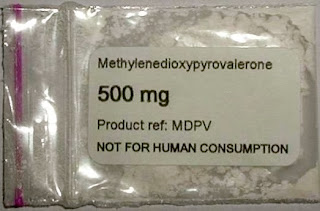Banning New Drugs: What is the Path Forward?
A year and a half later, what has changed? Today’s synthetic pharmaceuticals are not coming from secret underground laboratories, but rather from legitimate, existing Chinese pharmaceutical and chemical companies. In a commentary published in Addiction, Michael Evans-Brown and Roumen Sedefov of the European Monitoring Centre for Drugs and Drug Addiction in Lisbon present an unusually dystopian picture of new psychoactive substances fueling ever-increasing complexities in the world drug market. The authors refer to the situation as a textbook example “of what can happen when entrepreneurs exploit globalization and technology.” They write:
The market continues to grow. Consumers are no longer limited to psychonauts and clubbers, but include the vulnerable and marginalized, such as problem drug users and prisoners… manufacturers have replacement substances ready for sale even before a substance is controlled; the recipes for many thousands more are in the scientific and patent literature ripe for the picking.
The authors provide a grisly list of recent synthetic cannabinoid incidents: In Russia, products containing MDMB-FUBINACA were implicated in more than 600 poisonings and 15 deaths in two weeks in 2014. The same drug was linked to as many as 700 suspected adverse events in a single month in Mississippi in 2015, and in Europe, more than 200 people were hospitalized in Poland last year after smoking something called Mocarz. The causes of these mass poisonings, according to the authors include “high potency of synthetic cannabinoids, producers guess[ing] how much substance to use, and poor manufacturing processes leading to uneven distribution of the substance in the product—manufacturing flaws that are a recipe for disaster.” When users have no idea—not even a reasonable guess—at what chemical they are actually using, regulation and public health initiatives become exceedingly difficult.
In a bold and, according to some drug policy analysts, deeply misguided move, UK officials, tired of the drugs “arms race,” and the cat-and-mouse game of enforcement, made an attempt to do away with synthetic drugs in one monumental swipe, passing the Psychoactive Substances Act. In its earlier incarnations, the measure banned just about everything, including foods with caffeine and alcohol. Having straightened that out somewhat, the United Kingdom now faces a synthetic highs crackdown that drug charity DrugWise said will only push the market underground, “from the shops to the street.” If you think that’s a major improvement, raise your hand.
Another drug policy group, Transform, believes that the ban was aimed rather cynically at “visible sales,” in an effort to demonstrate some political PR success stories. Jane Slater, head of operations for Transform, told Huffington Post UK : “Far from making our communities safer the ban has resulted in increased health harms and criminality.”
“Laws just push forward the list of compounds,” according to Dr. Duccio Papanti, a psychiatrist at the University of Trieste who studies the new drugs. “The market is very chaotic, bulk purchasing of pure compounds are cheaply available from China, India, Hong-Kong, but small labs are rising in Western Countries, too.”
A spokesman for the UK Home Secretary pushed back, saying that “These drugs are not legal, they are not safe and we will not allow them to be sold in this country.”
Still, this negative spiral is not steady or inevitable. “Given how fashions and societies change," the authors note, "it is true that we do not know what the fate will be for many substances [remember that Quaaludes, not MDMA were the original disco biscuits]: but it is also fair to say that suppliers are not looking for the next cannabis, MDMA, heroin or diazepam; they simply make substances that can mimic their effects and that can be produced, transported and sold freely.”
It continues. On September 1, the Irish Examiner reported that a related cannabis drug, MDMB-CHMICA, often peddled as Black Mamba, has been linked to more than two dozen death in Europe. The European Monitoring Centre for Drugs and Drug Addiction confirmed 25 cases, involving comas, heart problems or seizures. “The high potency of MDMB-CHMICA and the highly variable amounts of the substances in ‘legal high’ products constitute a high risk of acute toxicity.”
In 1975, underground chemist Alexander Shulgin wrote that the variety of drugs capable of causing abuse problems was expanding rapidly. He did not envision an adroit way out of that spiral: “As these materials become better defined and their use better controlled, they will be replaced with substitute compounds, which will provide society with new, unknown, and unmanageable substances.” Managing these new risks effectively will require new and almost unimaginably sophisticated early warning systems to protect the public from new toxic offerings.










